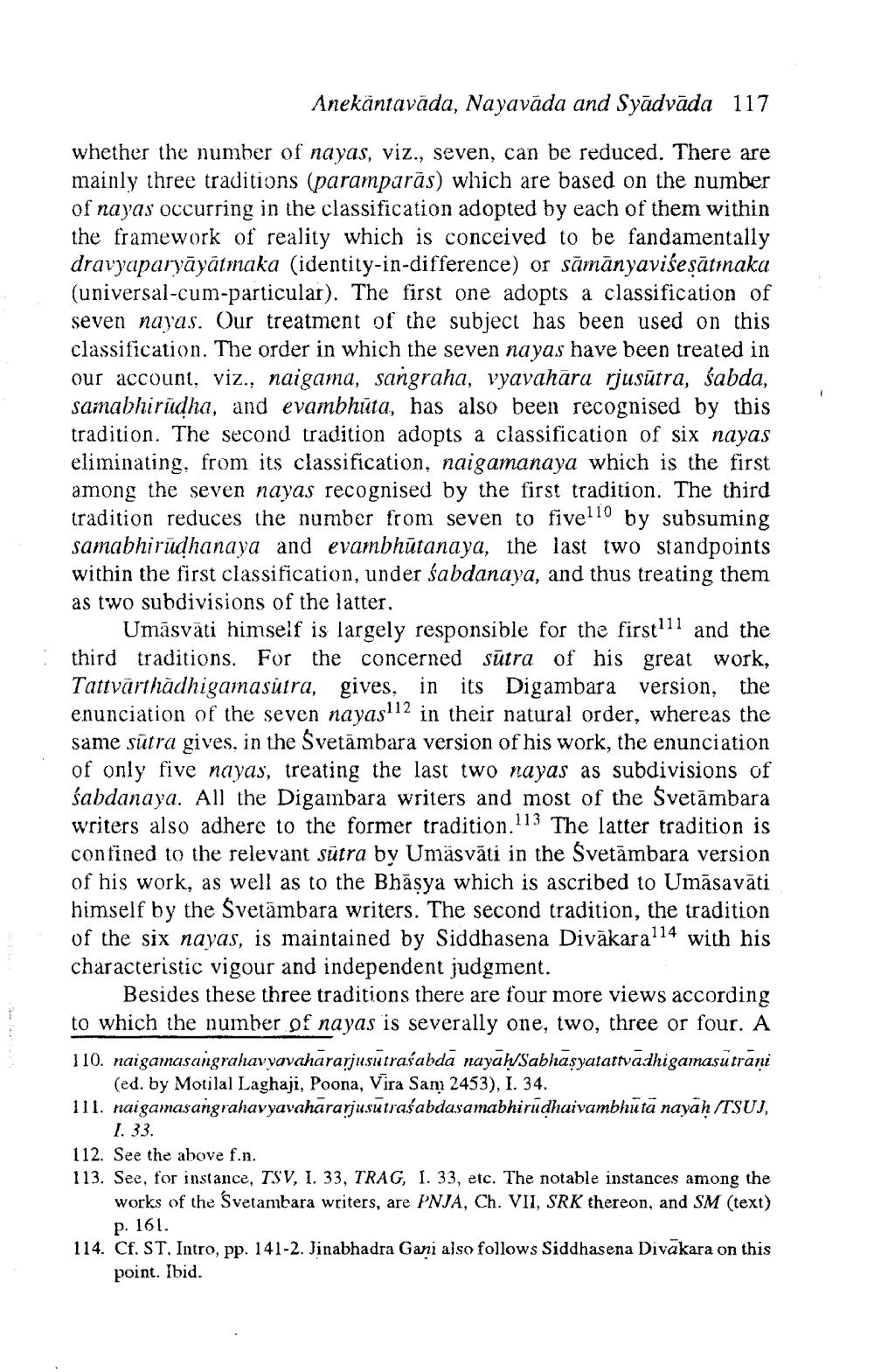________________
Anekantavāda, Nayavāda and Syādvāda 117
whether the number of nayas, viz., seven, can be reduced. There are mainly three traditions (paramparās) which are based on the number of nayas occurring in the classification adopted by each of them within the framework of reality which is conceived to be fandamentally dravyaparyāyātmaka (identity-in-difference) or sāmānyavišesātinaka (universal-cum-particular). The first one adopts a classification of seven nayas. Our treatment of the subject has been used on this classification. The order in which the seven nayas have been treated in our account, viz., naigama, sangraha, vyavaharu rjusūtra, sabda, samabhiridha, and evambhūta, has also been recognised by this tradition. The second tradition adopts a classification of six nayas eliminating, from its classification, naigamanaya which is the first among the seven nayas recognised by the first tradition. The third tradition reduces the number from seven to fivello by subsuming samabhi rūdhanaya and evambhūtanaya, the last two standpoints within the first classification, under śabdanaya, and thus treating them as two subdivisions of the latter.
Umāsvāti himself is largely responsible for the first111 and the third traditions. For the concerned sūtra of his great work, Tattvarthādhigamasutra, gives, in its Digambara version, the enunciation of the seven nayasl12 in their natural order, whereas the same sūtra gives, in the Svetāmbara version of his work, the enunciation of only five nayas, treating the last two nayas as subdivisions of sabdanaya. All the Digambara writers and most of the Svetāmbara writers also adhere to the former tradition.113 The latter tradition is confined to the relevant sūtra by Umäsvāti in the Svetāmbara version of his work, as well as to the Bhāşya which is ascribed to Umāsavāti himself by the Svetämbara writers. The second tradition, the tradition of the six nayas, is maintained by Siddhasena Divākaral14 with his characteristic vigour and independent judgment.
Besides these three traditions there are four more views according to which the number of nayas is severally one, two, three or four. A
110. naigamasangrahavyavahararjusutraśabda nayah/Sabhasyatattvadhigamasutrani
(ed. by Motilal Laghaji, Poona, Vira Sam 2453), I. 34. 111. naigamasangrahavyavahararjusutraśabdasamabhirudhaivambhuta nayah /TSUJ,
1. 33. 112. See the above f.n. 113. See, for instance, TSV, I. 33, TRAG, I. 33, etc. The notable instances among the
works of the Svetambara writers, are PNJA, Ch. VII, SRK thereon, and SM (text)
p. 161. 114. Cf. ST. Intro, pp. 141-2. Jinabhadra Gani also follows Siddhasena Divakara on this
point. Ibid.




